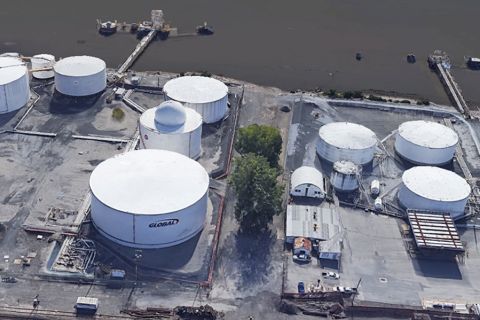
(Source: Shutterstock.com; Royal Dutch Shell Plc)
[Editor’s note: This story appears in the July 2020 edition of E&P. Subscribe to the magazine here. It was originally published June 30, 2020.]
Depending on perspective, the U.S. offshore industry is either equipped to weather the current storm or the hovering dark clouds portend longer-term complications. The price war between Russia and OPEC+, combined with the destruction in demand as a result of the COVID-19 pandemic, dealt a blow to North American shale, perhaps exposing a vulnerability. But the dynamics of the offshore industry—particularly the Gulf of Mexico (GoM)— might prove to be more buoyant amid the current price volatility.
“The region is resilient at low oil prices, and nearly 82% of oil production has a short-run marginal cost of $10/bbl Brent,” said Mfon Usoro with Wood Mackenzie’s GoM upstream research team. “On top of this, over 60% of rig contracts are short-term, which gives operators the flexibility to defer capex and maintain positive cash flow.”
Despite the low prices, the GoM will still produce a lot of oil this year—about 2 MMbbl/d, according to Wood Mackenzie. However, that figure is about 200,000 bbl/d less than what was initially forecast by the analyst.
“Over 60% of rig contracts are short-term, which gives operators the flexibility to defer capex and maintain positive cash flow.”
—Mfon Usoro, Wood Mackenzie
The larger issue for the GoM (and, for that matter, anywhere offshore) is the longer-term prospects. Since December 2019, 11 rigs have been taken offline in the Gulf, down to 13 from 24, according to the Baker Hughes rig count. Following the last market downturn, the GoM was just starting to pick up momentum with a larger appetite for exploration and new greenfield projects on the horizon. This year, three greenfield projects were planned with about $10 billion in total investments. In April 2020, Royal Dutch Shell announced it was holding off on a final investment decision (FID) on its Whale project until 2021.
“As a result [of the oil price crash], we do not expect any U.S. GoM project to be sanctioned in 2020,” Usoro said. “But, unlike the last downturn, where some projects were canceled, this time project FIDs have simply been deferred.”
Usoro said this could be attributed to the competitive economics of the pre-FID projects in the region, which she said could come down even further with cost deflation.
One of the lessons the oil and gas industry has learned—if it hadn’t already—is that sudden and severe price shocks can happen at any moment, whether they be a result of a pandemic, a price war or large-scale physical damage to production facilities. Such volatility does not bode well for offshore projects, because their high costs and long lead time require higher prices and more stable prices for longer.
Shale production offers more nimbleness and better short-term economics, while offshore provides more stability and longer-term production, but both industries’ weaknesses have been exposed amid the current market crash. Making up 30% of the world’s oil supply, the offshore industry isn’t going anywhere. But it might take years yet again to recover the momentum it was gaining.
Recommended Reading
Daniel Berenbaum Joins Bloom Energy as CFO
2024-04-17 - Berenbaum succeeds CFO Greg Cameron, who is staying with Bloom until mid-May to facilitate the transition.
Equinor Releases Overview of Share Buyback Program
2024-04-17 - Equinor said the maximum shares to be repurchased is 16.8 million, of which up to 7.4 million shares can be acquired until May 15 and up to 9.4 million shares until Jan. 15, 2025 — the program’s end date.
Mexico Pacific Appoints New CEO Bairstow
2024-04-15 - Sarah Bairstow joined Mexico Pacific Ltd. in 2019 and is assuming the CEO role following Ivan Van der Walt’s resignation.
Global Partners Declares Cash Distribution for Series B Preferred Units
2024-04-15 - Global Partners LP announced a quarterly cash dividend on its 9.5% fixed-rate Series B preferred units
W&T Offshore Adds John D. Buchanan to Board
2024-04-12 - W&T Offshore’s appointment of John D. Buchanan brings the number of company directors to six.





